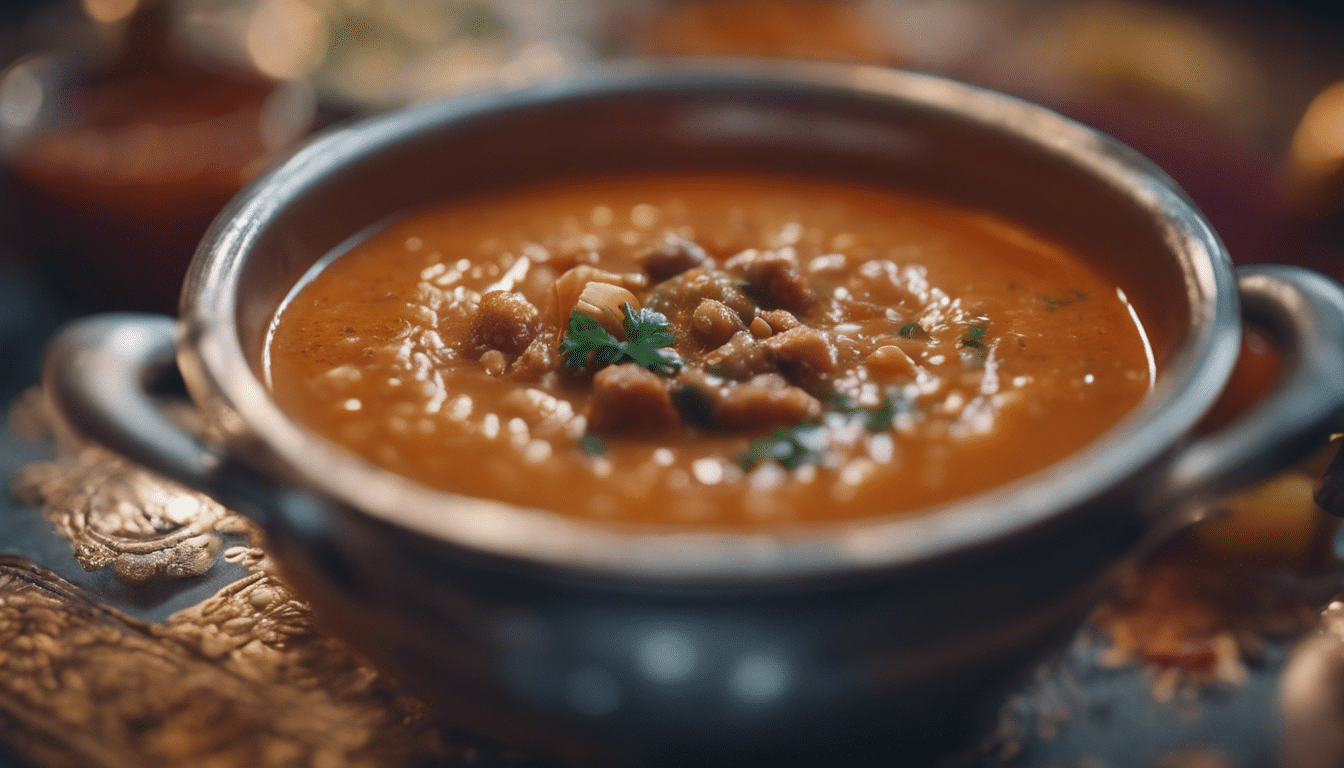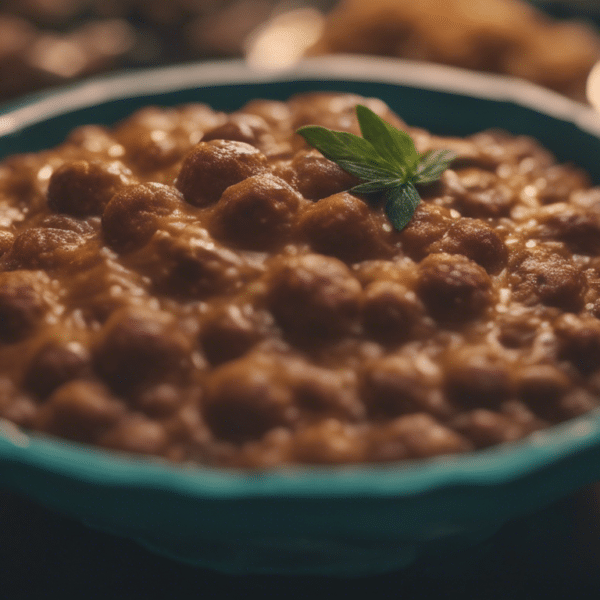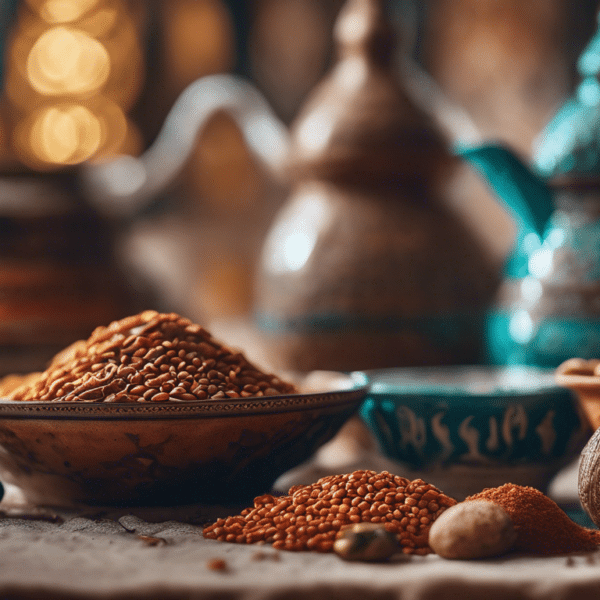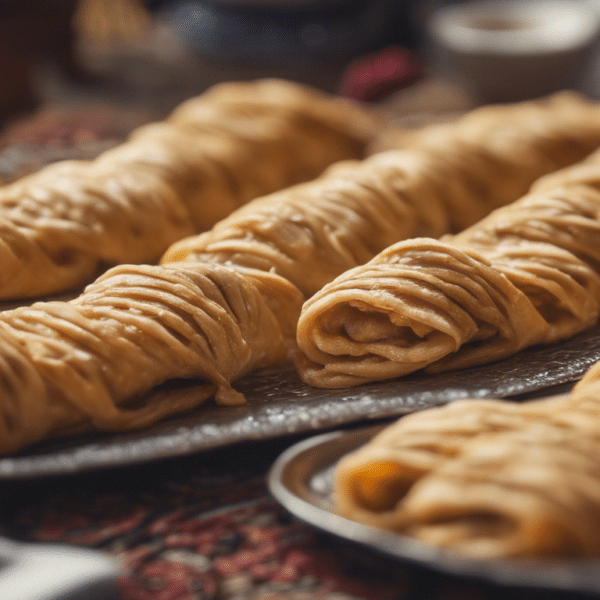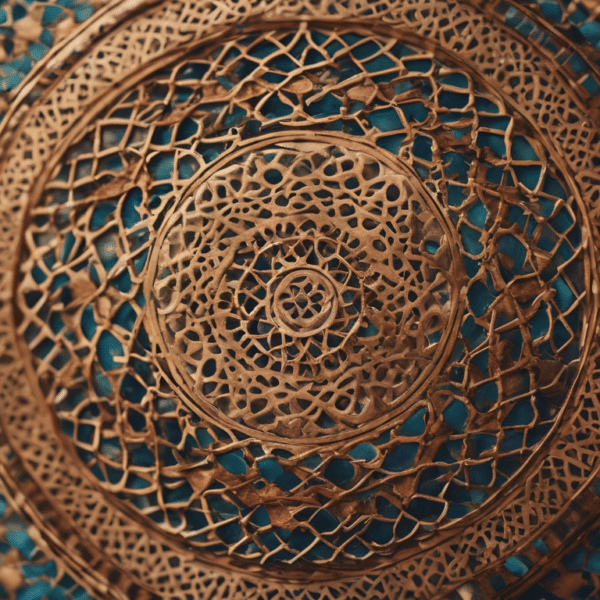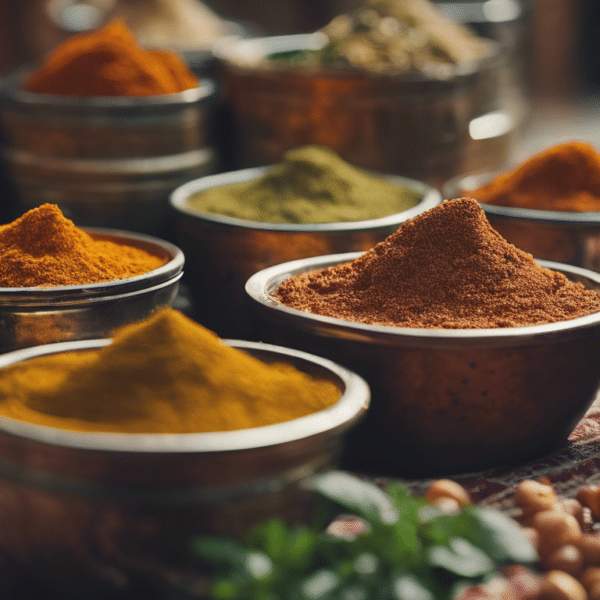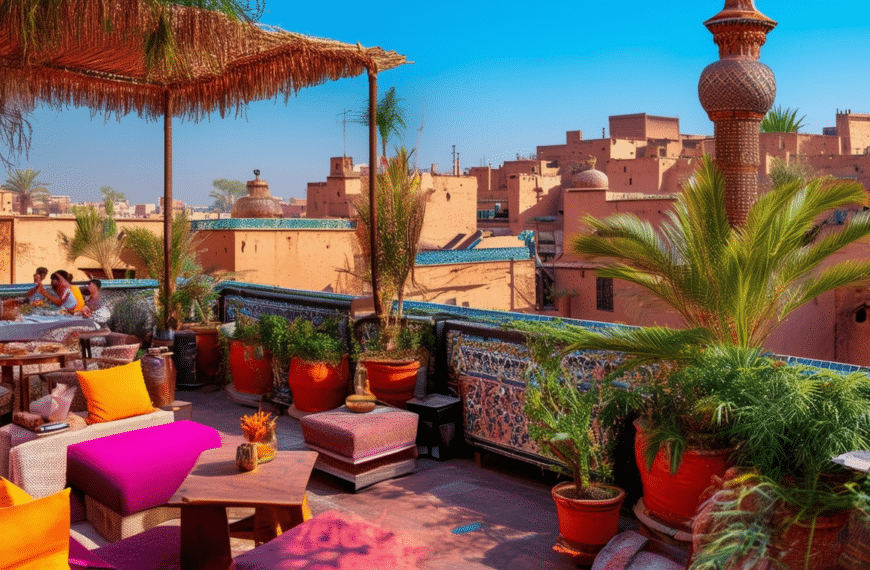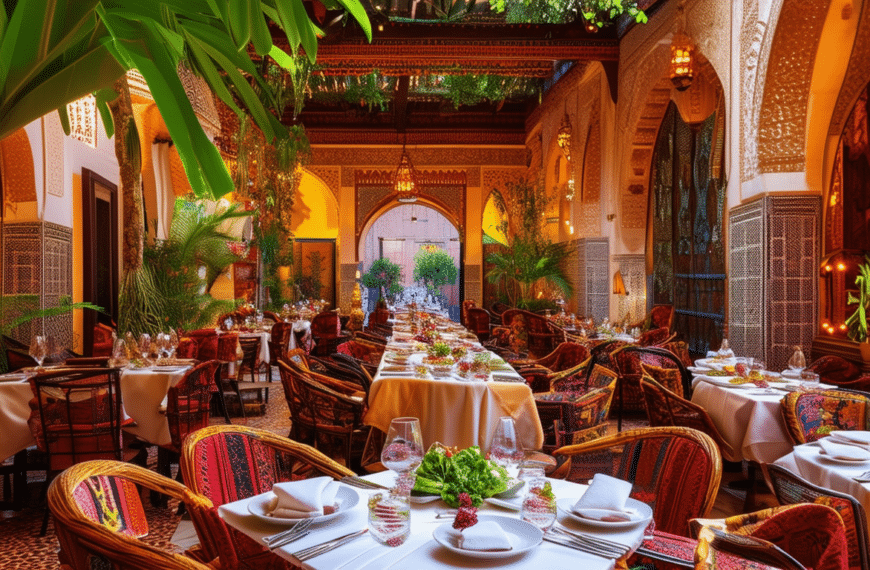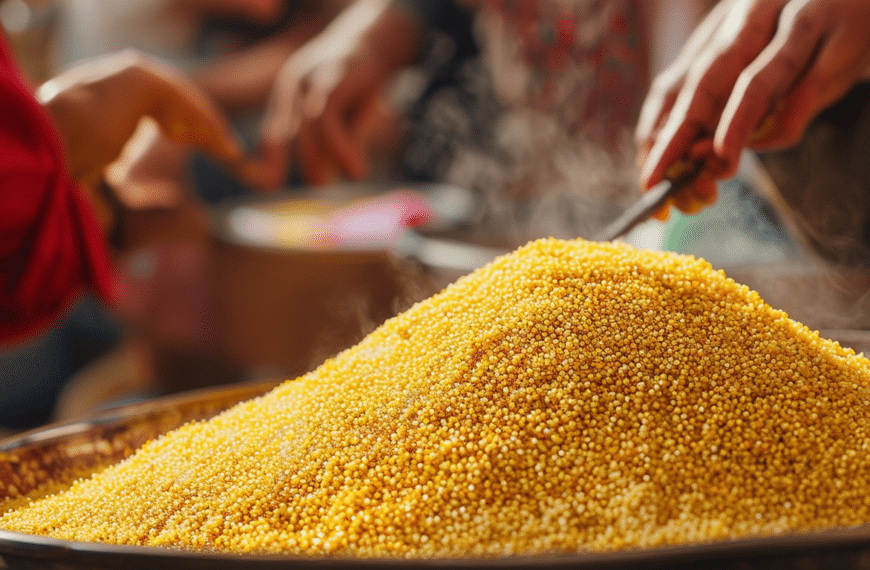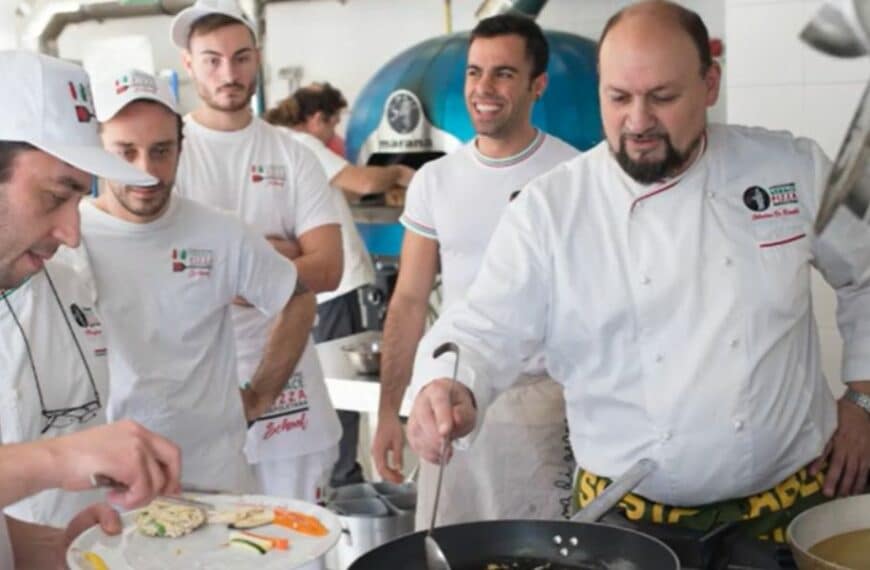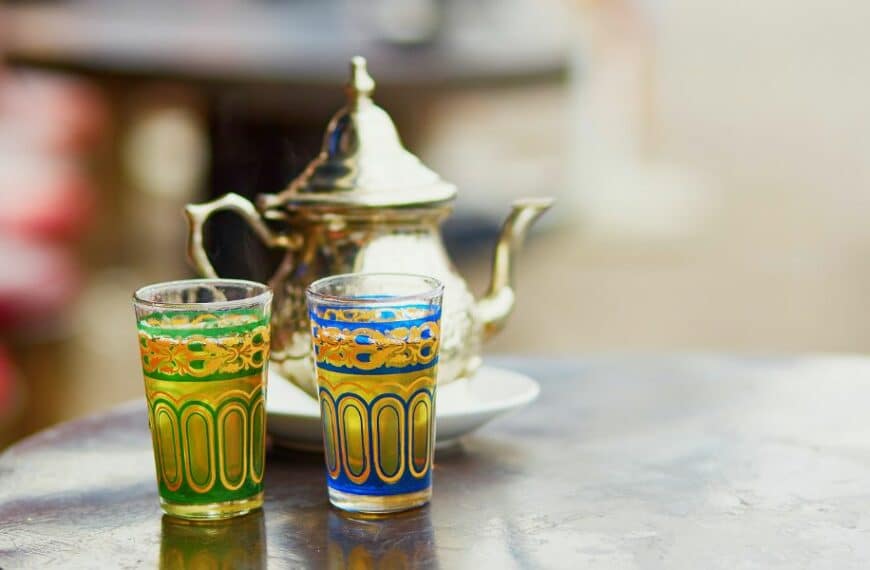The Origins of Moroccan Harira Soup
Steeped in history and bursting with flavor, Moroccan Harira Soup is a culinary legacy that has traveled through time, offering warmth and nourishment to countless generations. The origins of this sumptuous broth are as rich and layered as its taste, with each simmering pot encapsulating the essence of Moroccan tradition and hospitality.
A Blend of Cultures in a Bowl
Taking a spoonful of Harira is like sipping from a melting pot of Moroccan history. The soup’s foundations lie deep within the heart of both Berber and Arabic culinary traditions, with each culture imbuing it with unique spices and techniques. The Berbers, who were among Morocco’s earliest inhabitants, are believed to have invented a prototype of Harira, using their staples of barley and native herbs. With time and the Arab influence that swept across North Africa, the humble broth evolved, incorporating more complex flavors like tomatoes, lentils, and chickpeas, enriching it with a more robust texture and savory depth.
The Harmony of Spices and Herbs
Morocco’s position as a spice trade hub brought an array of spices and herbs to its shores, which found their way into the Harira. Cinnamon for sweetness, turmeric for earthiness, and ginger for a hint of spice are judiciously used to create a harmonious blend that resonates with the diverse palates of Morocco. Not to be overlooked, fresh cilantro and parsley lend the soup a bright, aromatic lift, while a squeeze of lemon juice adds just the right zing to balance the hearty components.
Harira Through The Ages
Traditionally, Harira is known as the soup of Ramadan, breaking the day’s fast with its satisfying and nutrient-rich contents. Over centuries, this soup has morphed, both in preparation and ingredients, adapting to the changes in society and available produce. It serves not only as a cultural staple during holy months but also as a social glue, bringing families together around the dining table, signifying harmony and unity, essential elements of Moroccan ethos.
Legacy in the Ladle
Although the original recipe of Harira may remain elusive—swathed in the secrecy of family recipes passed down through whispers and hands-on teaching—each bowl of Harira soup remains true to its origins. From the mountains of the Rif to the alleys of Marrakech, whether in a sumptuous riad or in a humble home, the spirit of Moroccan hospitality and history lives fervently within each steaming ladle of Harira.
Indeed, the origins of Moroccan Harira Soup tell a tale of convergence, a series of historical handshakes between culture, geography, and time. So, the next time you find yourself diving into a bowl of Harira, remember: you’re tasting more than a meal, you’re partaking in the rich legacy of an entire nation.
Classic Ingredients in Traditional Harira
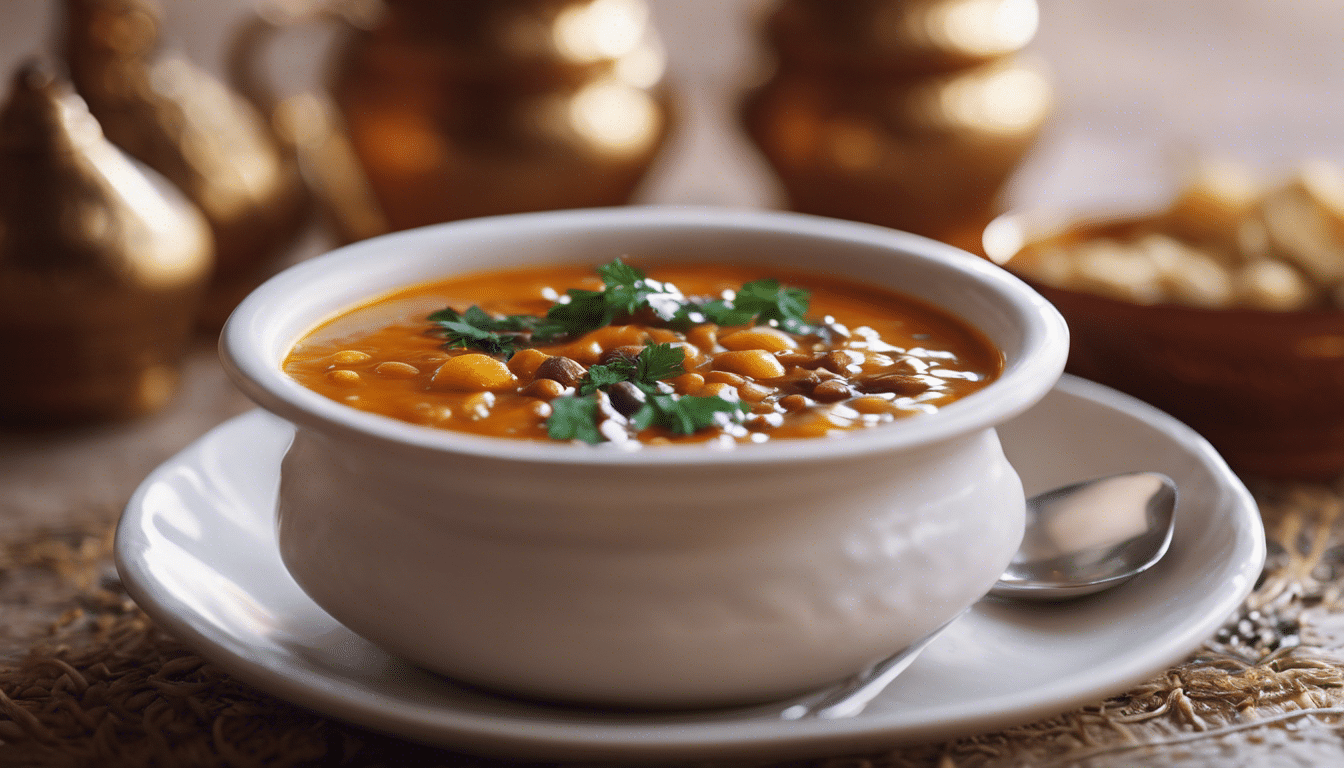
Moroccan Harira Soup: A Tapestry of Hearty Flavors
Imagine the intricate design of an authentic Moroccan tapestry – a vibrant blend of colors, patterns, and textures that draw the eye and capture the imagination. The making of Moroccan Harira Soup embodies a similar kind of artistry; it’s a culinary weave of flavors that binds the essence of Moroccan tradition in a comforting bowl of goodness. Here, we shall unravel the classic ingredients that give Harira its soulful touch, inviting you to infuse a dash of Morocco into your own kitchen.
The Foundations of Harira: Tomatoes & Lentils
At the outset, fresh, plump tomatoes are the heart of this iconic dish. They form the base with their juicy sweetness, reduced to a thick, rich sauce that nestles the other ingredients. Lentils, often in hues of green or brown, bring an earthy texture and are a cornerstone for the soup’s protein content, soaking up the flavors while ensuring the soup is filling and satisfying.
Proteins: Balancing Nutrition and Flavor
While lentils provide much of Harira’s body, it is the tender pieces of lamb or beef that enrich the soup with a level of depth and warmth. These proteins are typically stewed to perfection, becoming so soft that they melt in your mouth. For those seeking a lighter version, chicken may be a delicate alternative or, to cater to vegetarians, additional pulses such as chickpeas might be added in lieu of meat.
The Herbal Harmony: Cilantro and Parsley
Integral to Harira’s allure is the presence of fresh herbs – cilantro and parsley. Like a painter adding strokes of green to a canvas, these herbs are generously chopped and stirred into the pot. Their roles are pivotal, injecting the soup with a fragrance and zest that is unmistakable and refreshing.
Grains and Pastas: Texture Speaks
Culinary texture finds its voice through the incorporation of either rice or fine vermicelli pasta. This element provides a subtle bite, a playful contrast to the softness of the cooked pulses. But it’s not just about texture; these grains also act as sponges, absorbing the aromatic broth and proliferating its taste in every spoonful.
Spices: The Quintessential Moroccan Spirit
Now comes the enchantment – the spices that elevate Harira from a simple soup to an extraordinary feast for the senses. A warm embrace of cinnamon, a fiery kiss of ginger, a light caress of turmeric, and the mysterious touch of saffron. Together, they dance in harmony, creating layers of flavor that linger long after the meal has ended.
Endnotes: The Lemon & Dates
To savor Harira to its fullest, one cannot omit the final flourish served alongside this soulful soup. A squeeze of lemon juice just before serving adds a bright zing that cuts through the richness, and the traditional side of dates offers a natural sweetness – a nod to the Moroccan ethos of balancing flavors to achieve perfect gastronomic equilibrium.
In crafting a bowl of Harira, each ingredient is essential, playing its part in a symphony of taste. This is not merely a recipe; it’s a passage through time, a reflection of Moroccan heritage served up in the most delicious way. As you embark on your own culinary exploration, let these classic ingredients be your compass, guiding you to the warm, generous heart of Moroccan cuisine.
Regional Variations of Harira Across Morocco
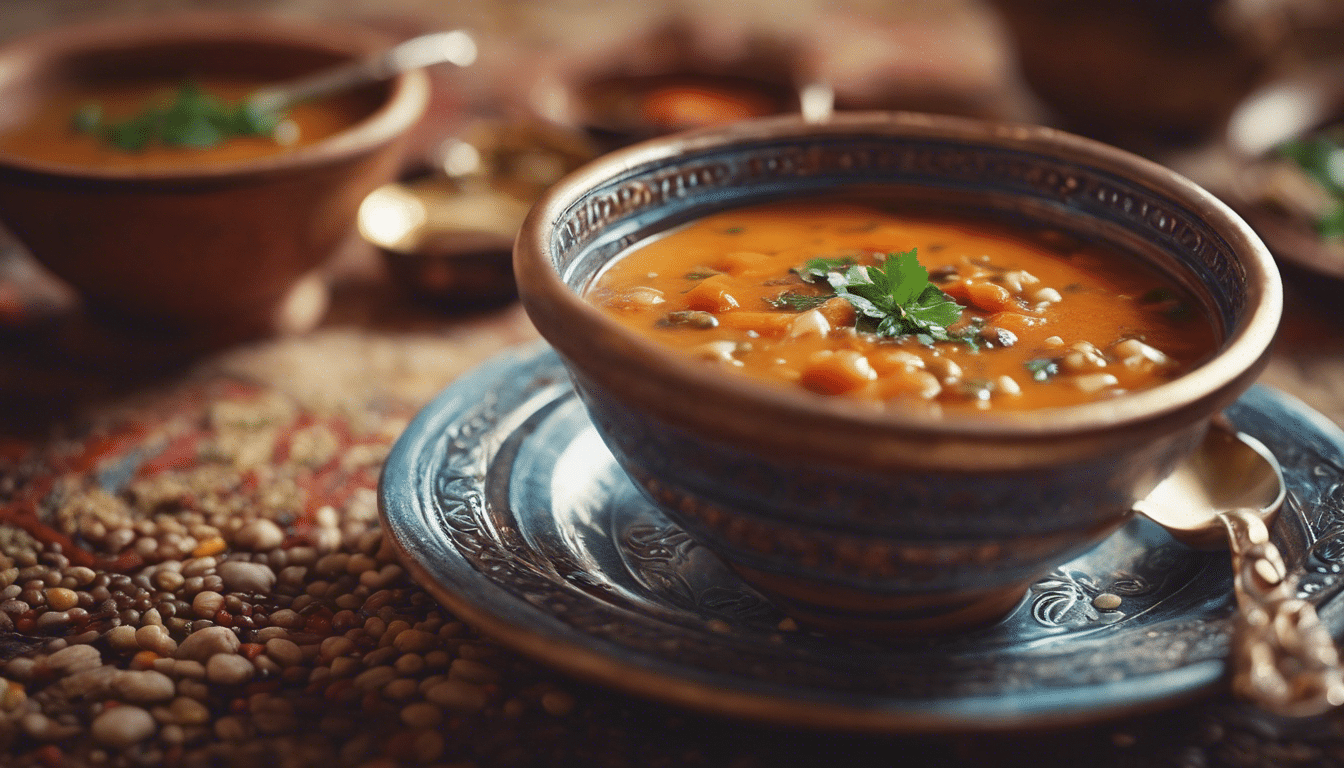
Moroccan Harira Soup: A Tapestry of Flavors Wrapped in Tradition
As the sun dips below the horizon in the enchanting landscape of Morocco, a pot of Harira soup simmers gently, ready to break the day’s fast or act as a warm welcome to a hungry traveler. This staple of Moroccan cuisine is not just a dish but an invitation into the heart of Moroccan hospitality. Yet, the thread of custom that weaves through Morocco carries not one, but many variations of this beloved soup, each with its own tale and taste.
Harira of the North: Tangier’s Twist on Tradition
Venture to the northern city of Tangier and you will encounter a Harira with a coastal embrace. Here, the Tangier Harira takes on a lighter form. While traditional ingredients like lentils, chickpeas, and tomatoes remain, you might find a more delicate hand with the herbs and spices. A splash of freshly squeezed lemon juice often accompanies the Northern servings, adding a crisp zing that echoes the city’s sea-kissed air.
Relishing the Richness: Fez’s Fragrant Feast
In the labyrinth streets of Fez, the Harira soulfully stewed pays homage to the city’s rich history. Fez’s Harira is a regal relative within the Moroccan soup family, known for its heartier consistency and rich spices. Here, one can taste the depth of the soup, enhanced with smoky notes of cumin and the warming glow of cinnamon, often serving as a full meal with a side of chewy, fresh-from-the-oven bread.
Culinary Caress from the South: Sahara’s Subtle Scent
The sands of the Sahara whisper their secrets to the southern Harira, where the touch of spice is as subtle as a desert breeze. The soup in these regions might surprise with additions like dried dates or figs, a tribute to the bounties that are gifts of the arid lands. A bowl of Harira from these parts provides not just nutrition but a piece of the silent majesty that defines the Moroccan south.
High Atlas Hearty Brew: A Mountainous Melange
Ascend to the High Atlas Mountains, where the air is crisp and the Harira is robust. The people here favor a more rustic version of the soup, with barley and a variety of beans lending a toothsome texture to every spoonful. The inclusion of locally sourced herbs, such as the mountainous horsetail and pennyroyal, infuses the Harira with a freshness that mirrors the alpine environment.
Unveiling Marrakech’s Magic: A Sensory Spectacle
In the vibrant city of Marrakech, the Harira reflects the city’s bustling energy and colorful landscapes. There, chefs might add a generous amount of vermicelli noodles, turning the dish into a delightful combination of soup and pasta. The generous pinch of saffron found in Marrakech’s Harira paints the dish with golden hues and infuses it with an aroma that guides one through the city’s spice-laden souks.
In each bowl of Harira, whether gently flavored or vibrantly spiced, is an edible narrative of the region from which it hails. This Moroccan marvel is not merely a soup; it’s a mosaic of the country’s regional diversity, each recipe offering up its own unique story. So, when you dive your spoon into a steaming bowl of Harira, know that you’re not just savoring a meal, but also partaking in the rich tapestry of Moroccan culture.

